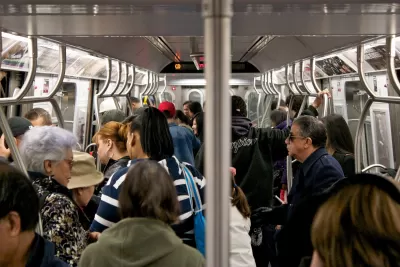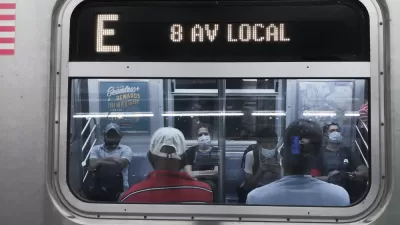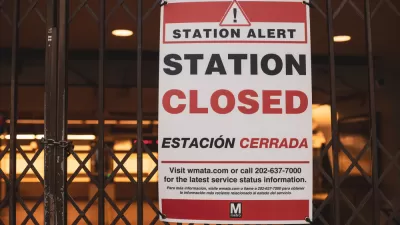The growth in transit rips in the United States over the course of the second and third quarters of 2019 can be traced to growth in two key cities.

Laura Bliss shares news of new data from the National Transit Database that reveals the first evidence of a turnaround for transit ridership in the United States.
Ridership across U.S. public transit agencies rose 2.2 percent compared to the same time period in 2018, the American Public Transportation Association reported last month. This was the second consecutive quarter to mark an increase, and the first consecutive quarter to post an increase since the end of 2014, when ridership hit a 50-year peak. The uptick in ridership between Q3 2019 and Q3 2018 amounted to about 54 million more trips.
According to the article, the overall increase in transit riders can be credited to massive improvements in two regions: New York City and Washington, D.C. After years of reliability and maintenance crises, writes Bliss, "both have since made substantial improvements, including a year of 24/7 track maintenance in D.C. and nearly $800 million of signal upgrades, drain clearing, and employee overtime payouts in New York."
As noted by Bliss, the two systems have a ways still to go to reach previous peaks of ridership. Meanwhile, ridership continues to decline elsewhere in the country, including in major cities like Boston, Los Angeles, Chicago, and Philadelphia.
The Washington Metropolitan Area Transit Authority celebrated Metrorail's ridership recovery with a press released published a few days after Bliss's article.
FULL STORY: Behind the Gains in U.S. Public Transit Ridership

Alabama: Trump Terminates Settlements for Black Communities Harmed By Raw Sewage
Trump deemed the landmark civil rights agreement “illegal DEI and environmental justice policy.”

Study: Maui’s Plan to Convert Vacation Rentals to Long-Term Housing Could Cause Nearly $1 Billion Economic Loss
The plan would reduce visitor accommodation by 25% resulting in 1,900 jobs lost.

Why Should We Subsidize Public Transportation?
Many public transit agencies face financial stress due to rising costs, declining fare revenue, and declining subsidies. Transit advocates must provide a strong business case for increasing public transit funding.

Wind Energy on the Rise Despite Federal Policy Reversal
The Trump administration is revoking federal support for renewable energy, but demand for new projects continues unabated.

Passengers Flock to Caltrain After Electrification
The new electric trains are running faster and more reliably, leading to strong ridership growth on the Bay Area rail system.

Texas Churches Rally Behind ‘Yes in God’s Back Yard’ Legislation
Religious leaders want the state to reduce zoning regulations to streamline leasing church-owned land to housing developers.
Urban Design for Planners 1: Software Tools
This six-course series explores essential urban design concepts using open source software and equips planners with the tools they need to participate fully in the urban design process.
Planning for Universal Design
Learn the tools for implementing Universal Design in planning regulations.
Caltrans
Smith Gee Studio
Institute for Housing and Urban Development Studies (IHS)
City of Grandview
Harvard GSD Executive Education
Toledo-Lucas County Plan Commissions
Salt Lake City
NYU Wagner Graduate School of Public Service




























